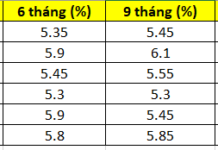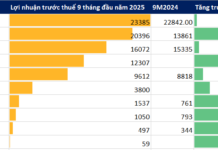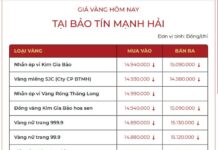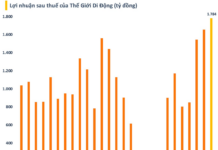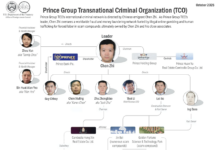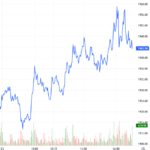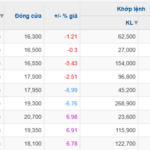VAMC Processes Debt Recovery of Over VND 16,100 Billion, Posts Tax Profit of VND 176 Billion
Vietnam Asset Management Company (VAMC), a limited liability company, has released its business performance report for 2023.
Specifically, VAMC purchased distressed debts worth VND 1,755 billion at market value, a 65% increase compared to 2022. They successfully recovered VND 16,109 billion in principal debt, surpassing the previous year’s achievements by 49%. VAMC also met its target of purchasing non-performing loans (NPLs) with special bonds and accomplished 65% of its plan to buy NPLs at market value, exceeding its debt recovery target by 117%.
Notably, all performance indicators set by the State Bank of Vietnam (SBV) for VAMC in 2023 were met and showed growth compared to the previous year. VAMC recorded VND 1,721 billion in revenue and VND 176 billion in post-tax profits, marking a 39% and 5% increase, respectively, from 2022. The company achieved the planned return on equity ratio set by the SBV, witnessing a 6% improvement from the previous year.
According to VAMC, Resolution 42/2017/QH14 significantly contributed to their success, as debt recovery results from August 15, 2017, to December 31, 2023, accounted for nearly 3/4 of their total debt recovery between 2013 and 2023. VAMC purchased distressed debts at market values totaling nearly VND 14,000 billion. Of this, purchases made under Resolution 42/2017/QH14 constituted almost 95%, and they successfully resolved over 79% of these market-value debt purchases.

Challenges and Obstacles
VAMC identified several challenges and limitations in their operations. Firstly, their market for purchasing distressed debts is restricted. According to Decree 19/2013/TT-NHNN and its amendments, VAMC is only permitted to purchase non-performing loans that are on the balance sheets of credit institutions. Additionally, Resolution 42/2017/QH14 stipulates that VAMC can only purchase non-performing loans that were on the balance sheets of credit institutions before August 15, 2017. Consequently, many new non-performing loans that arose after the resolution came into effect and were handled off-balance sheet by credit institutions do not fall within VAMC’s scope of debt purchases.
Circular No. 02/2023/TT-NHNN, issued on April 23, 2023, allows credit institutions and bank branches to restructure debt repayment periods and maintain debt classifications to support customers facing difficulties. This has reduced the demand for credit institutions to sell their NPLs to VAMC through special bonds.
VAMC also faced challenges due to unfavorable economic conditions, including potential risks in the monetary, financial, and real estate markets, as well as difficulties in production, business operations, and the labor market following the COVID-19 pandemic. These factors impacted businesses’ access to capital and their investment and expansion plans, affecting the financial situation and business direction of VAMC’s customers. Some large-value debts that VAMC planned to purchase and handle by selling collateral faced obstacles due to prospective buyers’ insufficient financial resources.
Furthermore, most of the collateral for the distressed debts that VAMC has purchased or plans to purchase at market value is real estate. However, the real estate market has been experiencing a downturn and low liquidity, coupled with legal complications related to the handling of collateral, such as land use procedures and complex financial obligations. These factors have directly impacted the progress of VAMC’s debt purchases and resolutions.
Many of the debts offered by credit institutions did not meet the conditions for debt sales as stipulated by regulations. These complex and challenging-to-resolve debts often involve uncooperative customers, ceased business operations, or legal cases, with contact with the borrowers being impossible in some instances. The value of collateral for these debts is also significantly lower than the debt value, making it genuinely difficult for VAMC to select debts that meet the purchase criteria while ensuring capital safety.
Current regulations permit VAMC to auction only non-performing loans and the collateral of non-performing loans that they have purchased from credit institutions, including those bought at market value and with special bonds. This limitation restricts the range of auction participants and VAMC’s auction activities.
Regarding accounting practices for recognizing revenue and cost of debt purchases at market value, according to Clause 3.3, Article 6, Circular No. 01/2017/TT-BTC dated January 5, 2017, issued by the Ministry of Finance: “For revenue from the sale of debt and collateral of debt purchased at market value, VAMC shall recognize it as financial income at the time of transferring rights and obligations to the buyer.” Consequently, VAMC lacks a basis for accounting for reduced debt for customers when the buyer has not yet transferred rights and obligations. As a result, borrowing customers are still subject to interest on the debt balance, even if it has been partially settled through the sale of collateral.
As a novel concept, VAMC’s debt trading platform faces challenges in attracting participants. The products offered, which include non-performing loans and collateral with low liquidity that credit institutions have unsuccessfully attempted to resolve for years, are not particularly appealing to investors.
Overcoming Challenges in Dealing with Bad Debts
In the newly passed Revised Securities Law, securities companies (SCs) no longer have the privilege to hold collateral. Therefore, SCs need to recognize that debt collection is their responsibility, and they should be extremely strict in assessing borrowers, ensuring compliance with principles, procedures, and conditions before granting loans.






